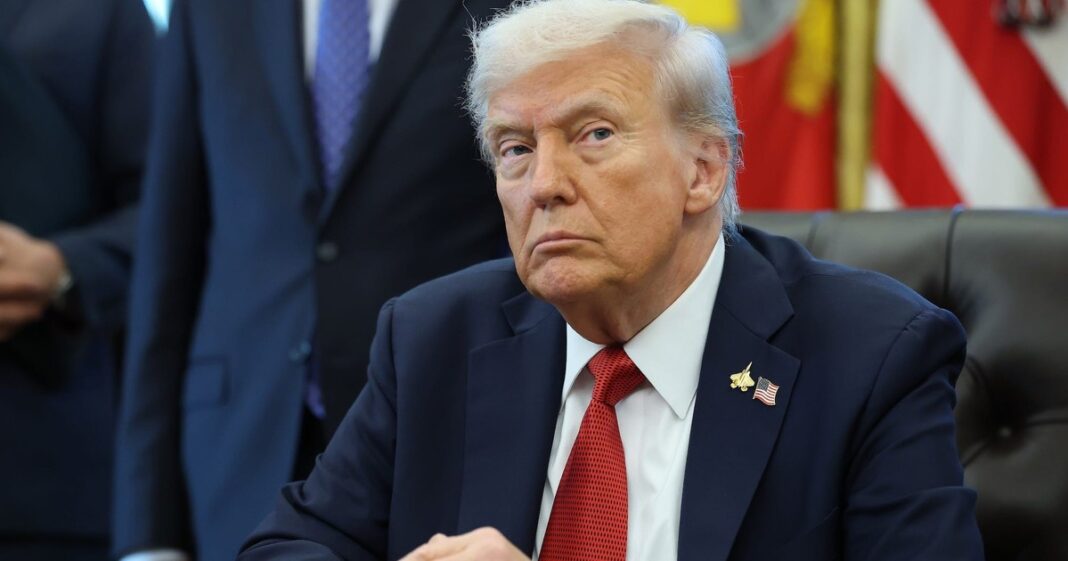The Continuing Government Shutdown: Implications and Developments
As the government shutdown enters its third week, the ramifications are starting to ripple through various sectors of American life. The uncertainty surrounding funding and the future of many federal programs continues to generate concern among lawmakers, federal employees, and everyday citizens.
Federal Workers and Back Pay
A law enacted in 2019 was designed to ensure that federal workers receive back pay after a government shutdown. However, recent statements from the Trump administration have cast doubt on whether furloughed employees will see those payments in a timely manner, suggesting that Congressional action may be necessary.
Despite this looming uncertainty, many lawmakers seem to be at an impasse, with negotiations stuck in a rut. Democrats argue that any vote to reopen the government must first tackle a significant healthcare crisis, framing it as a priority for their support.
Impact on Federal Operations
The immediate effects of the shutdown on everyday Americans have been relatively muted so far. While hundreds of thousands of federal workers have been furloughed, essential staff, particularly on Capitol Hill, have largely remained active. Members of Congress can designate their employees as essential, and many have done just that.
Republican Senator Josh Hawley of Missouri noted, “For us, it’s going to be business as usual. Everybody else in the country is working. So we’ve got to be here and be working.” His remarks highlight a belief among some lawmakers that the government must continue to function regardless of the shutdown.
Nevertheless, the Trump administration has begun implementing some controversial measures. Reports indicate mass firings are occurring as a direct result of the shutdown, a move that many perceive not as a necessity but as a deliberate tactic to apply pressure on Democrats. Senate Minority Leader Chuck Schumer condemned these actions as “deliberate chaos,” emphasizing that they harm essential workers.
Disruptions to Services
As the shutdown drags on, certain federal services are starting to see significant interruptions. Airports nationwide are beginning to experience delays, primarily due to a shortage of air traffic controllers — a direct consequence of the ongoing government funding issue.
While these disruptions have yet to escalate dramatically, there is concern that public frustration could grow, fueled by delays and reduced services.
The Stalemate on Capitol Hill
The political landscape on Capitol Hill remains fraught with tension. House Republicans passed a funding bill along party lines a few weeks back, which has failed multiple times in the Senate. Achieving the 60 votes needed for passage has proven elusive, with not enough Democrats willing to back the GOP’s plan.
Despite daily press conferences and persistent messaging from both sides, meaningful negotiations seem stagnant. Republican leadership has resorted to keeping the House out of session to push Democrats toward agreeing on their terms.
Meanwhile, President Trump has taken a relatively hands-off approach, seemingly leaving the heavy lifting to his congressional allies. Conversations among lawmakers have largely echoed the same themes without showing signs of progressive dialogue.
The Healthcare Crisis as a Lever
Amidst the shutdown chaos, the potential expiration of Affordable Care Act tax credits hangs in the balance, threatening to raise healthcare costs dramatically for millions. Democrats have been firm, insisting that any government reopening must include discussions on this critical issue.
Republican leaders have indicated a willingness to address healthcare concerns but only after the government is reopened. This dynamic creates a precarious back-and-forth, with neither side willing to concede their position.
Historical Context: Lessons from the Past
Reflecting on the longest government shutdown in history, which lasted 35 days from late 2018 to early 2019, there are dire warnings about the implications of such gridlock. That shutdown eventually ended when the growing impact on commercial air travel forced concessions.
Democratic Senator Tim Kaine of Virginia suggested that if similar conditions emerged, it could nudge President Trump toward seeking a deal once more. The interconnectedness of the economy with functioning governmental operations highlights how pressure from the public can sometimes prompt resolution.
As the shutdown draws on, the ultimate fate of negotiations remains uncertain, but its effects are already being felt across various aspects of society. The stakes are high as government officials continue to grapple with the complex interplay of legislative priorities, economic pressures, and human costs.



